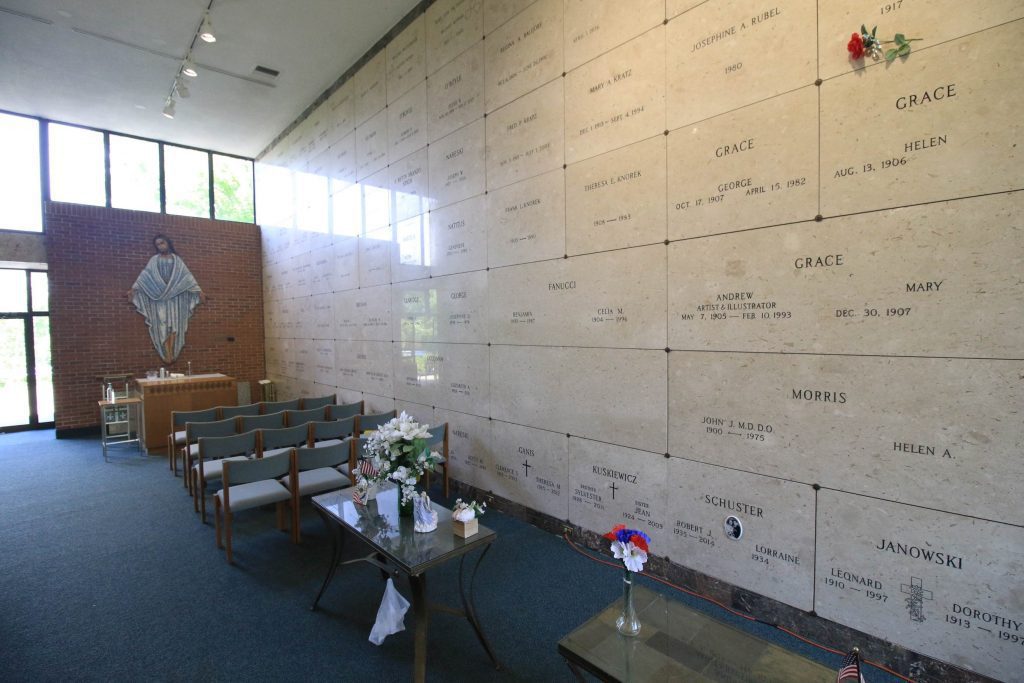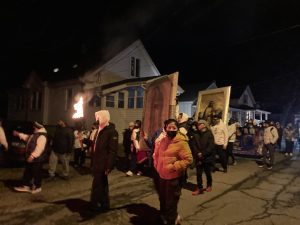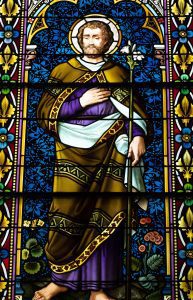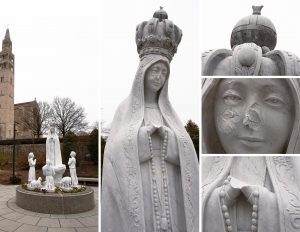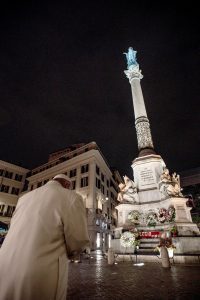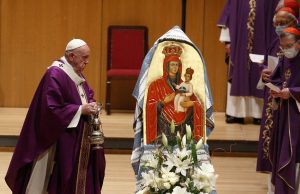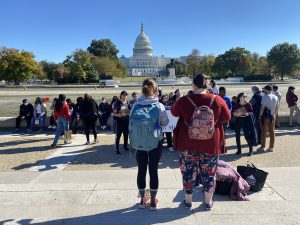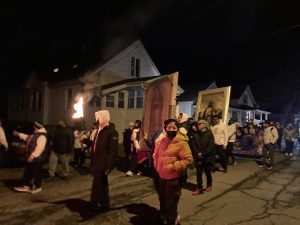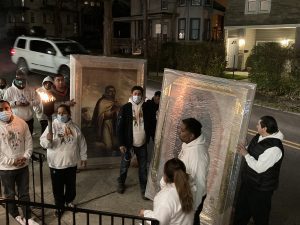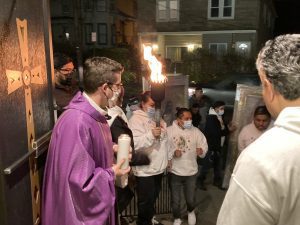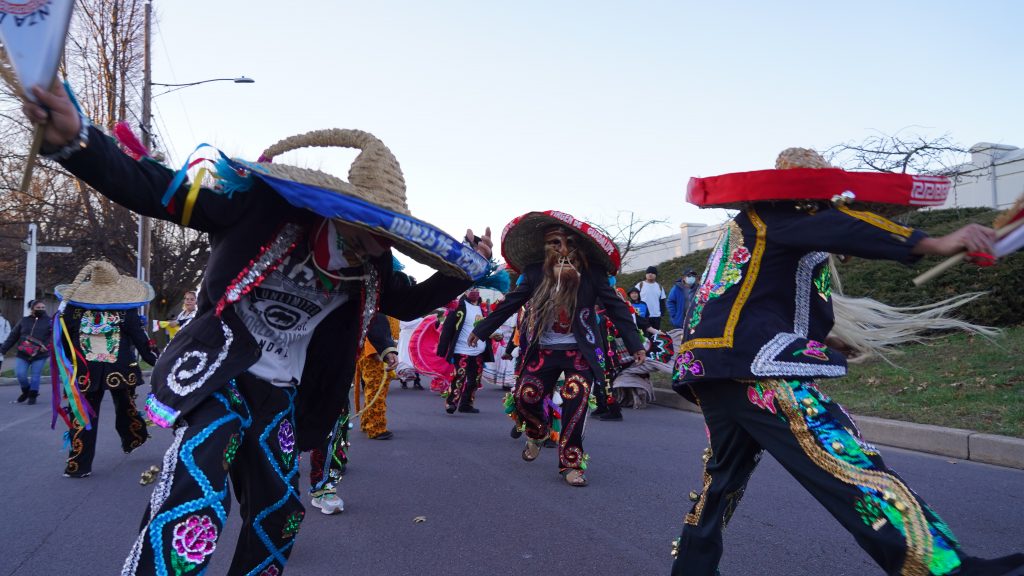
WILKES-BARRE – Masses and special processions were held throughout the Diocese of Scranton on Dec. 12 to celebrate the Feast of Our Lady of Guadalupe.
More than 300 people took to the streets of Wilkes-Barre for a procession that started on Old River Road and ended up at Saint Nicholas Parish on South Washington Street. Throughout the entire procession, a statue of Our Lady of Guadalupe was hoisted high on a rose-covered platform as the faithful danced, sang and threw rose petals in her honor.
Andrea Perez, who is originally from Mexico, calls the procession a beloved tradition.
“The Virgin Mary is the mother of Jesus and that is why we love her,” she explained. “We are from Mexico and she appeared in Mexico.”
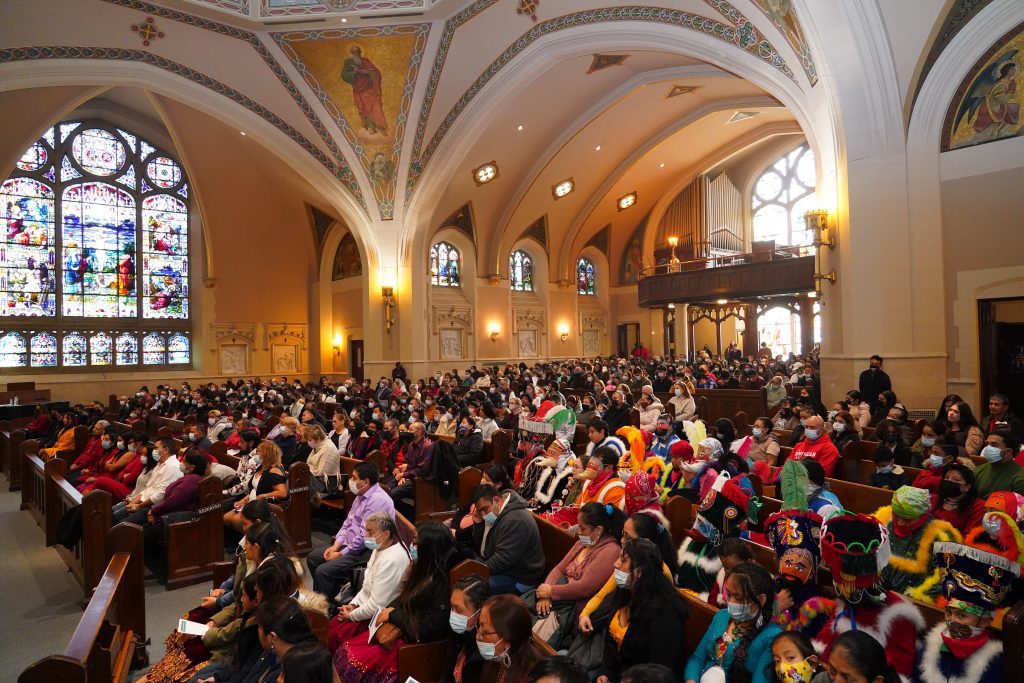
The annual Feast of Our Lady of Guadalupe commemorates the appearance of the Virgin Mary to a Mexican Indian peasant – now venerated as Saint Juan Diego – in December 1531 in Tepeyac, near present-day Mexico City. The Blessed Mother’s appearance is believed to have resulted in millions of conversions to Catholicism, and her message of hope continues to inspire those of Hispanic descent.
“For us, this is one of the biggest events,” Gilberto Vasquez, parishioner of Saint Nicholas Church, said. “She is the mother of Jesus and our mother too!”
The procession featured every age group. Yasmin Guzman, a young adult herself, says she has been participating since she was little.
“We do this all together as a family tradition and it’s been going on from generation to generation,” Guzman said.
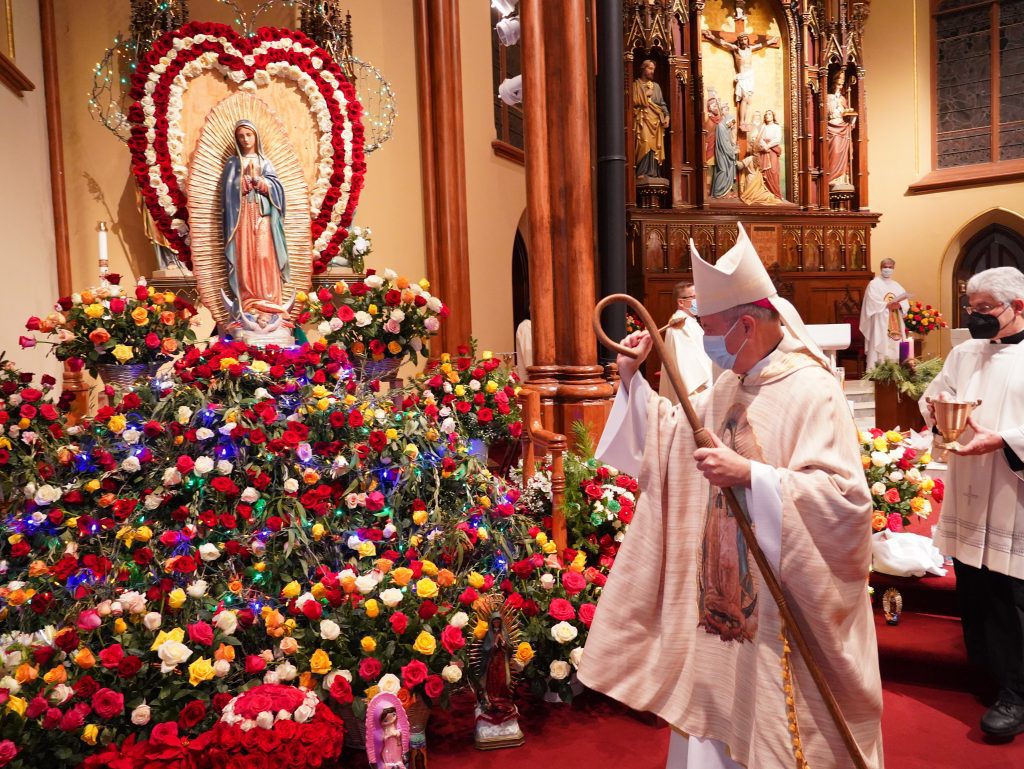
Father Fidel Ticona of Saint Nicholas Parish was not surprised by the large crowd that turned out for the procession or the 5 p.m. Mass that followed with the Most Reverend Joseph C. Bambera, Bishop of Scranton.
“Our Blessed Mother holds a special place in our hearts, especially among the Hispanic community. She is our intercessor. She is our friend. She is our mother who walks with us, who understands our joys and also our needs and sufferings,” he said.
In addition to the Mass at Saint Nicholas Parish, Bishop Bambera also celebrated Mass for the Feast of Our Lady of Guadalupe – which took place on the Third Sunday in Advent – at Saint John Neumann Parish in Scranton.
Long before sunrise, beginning at 3 a.m., parishioners of Saint John Neumann Parish also held a procession from the Cathedral of Saint Peter to Saint John Neumann Parish. The bishop joined the faithful for a Mass at 1 p.m.
“We gather today in joy and gratitude to celebrate many things: our cultural roots, our traditions, but most especially our faith – a faith that reminds us all that with faith in God, all things are possible,” Bishop Bambera noted in his homily.
Bishop Bambera also shared words from Pope Francis, in which he said, “because she is the handmaid of the Lord, she became a servant of her brothers.”
“It would be well for us to learn from her example and to reflect upon our relationship with Jesus and the simple gifts that he comes to bring: the gift of life, the gift of each new day, the gift of faith and peace at our center and the gift of joy, born from our service of our brothers and sisters,” the bishop said.
Our Lady of Guadalupe celebrations also took place at Saint Matthew Parish in East Stroudsburg, Annunciation Parish in Hazleton, Holy Name of Jesus Parish in West Hazleton, Sacred Hearts of Jesus & Mary Parish in Jermyn, Saint Joachim Parish in Meshoppen and Saint Boniface Parish in Williamsport.

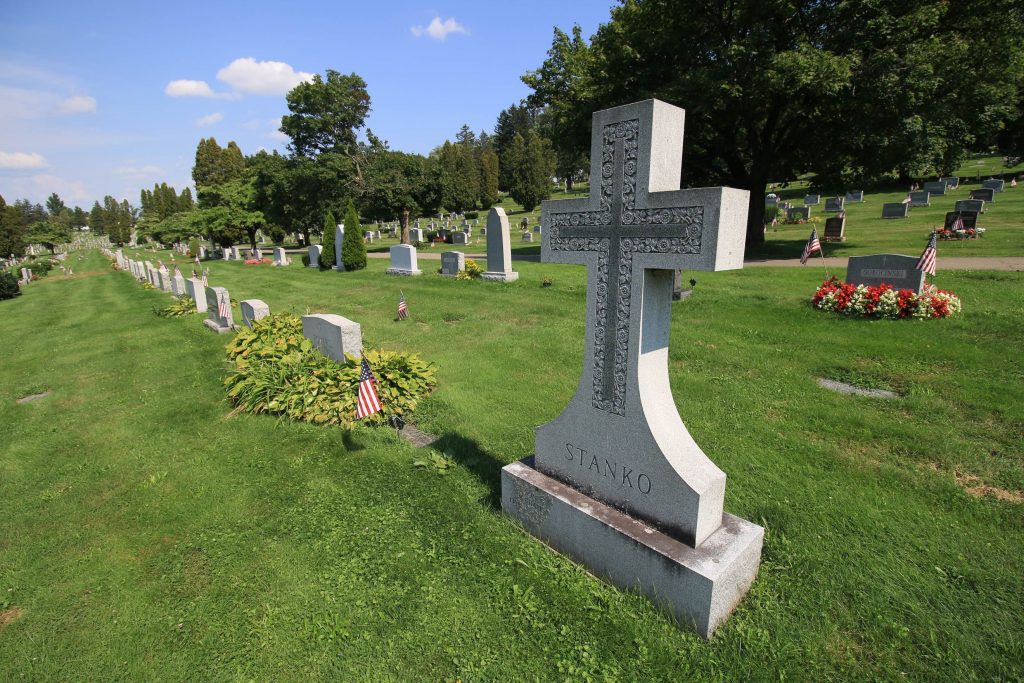
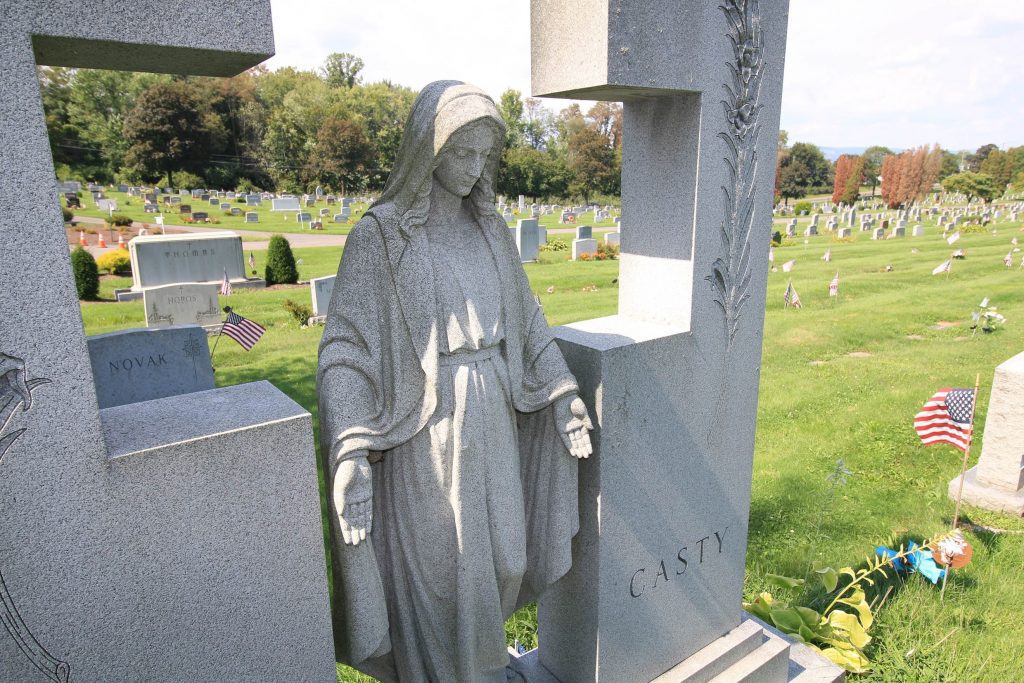 The city parish communities, which are in close proximity of each other, are now under the pastorship of Father Joseph Verespy, who assumed the pastorate of Our Lady of Fatima Parish, with its worship site of Saint Mary of the Immaculate Conception Church, as he continues to serve as pastor of Saint Nicholas Parish.
The city parish communities, which are in close proximity of each other, are now under the pastorship of Father Joseph Verespy, who assumed the pastorate of Our Lady of Fatima Parish, with its worship site of Saint Mary of the Immaculate Conception Church, as he continues to serve as pastor of Saint Nicholas Parish.